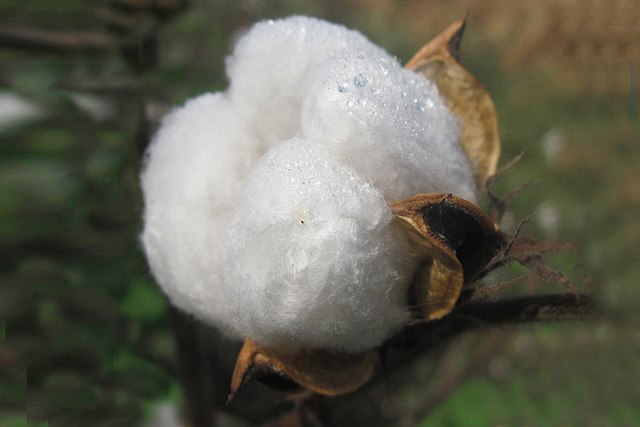An uptick surge in the number of ginning factories has made yarn competitive and is pushing cotton prices in Pakistan.
By July 7, 2024, bale prices had improved by 600 Pakistani rupees ($2.15) per mound (37 to 40 kg).
For one, the southeastern province of Sindh offered cotton from 18,400 to 18,600 rupees ($66.06-66.77) in week 1, July 2024.
At the same time in the first week of July 2024, prices in Punjab hit a maximum 19,500 rupees ($70) per maund.
All these improvements are thanks to renewing business capacity by hitherto non-operational textile factories.
Seed Cotton Bests Set Minimum Prices
Seed cotton or “Phutti,” on the other hand, was trading at between 8,400 and 8,800 rupees ($30.16-31.59) per 40 kg in Karachi. The best rate, however, was in Punjab at a maximum 9,700 rupees ($34.82) per maund. Notably, the two offers were marginally above the government’s minimum wholesale price of 8,500 rupees ($30.52) for 40-kg bales.
Pakistan introduced the minimum price in the October 2023 harvest season, a move that helped revive the cotton sector.
The country saw an initial year-on-year production growth of 62% in the 31/2 months ending October 2023.
Revival of a Dying Giant
Surging cotton prices and improving production are recalling times when the country could produce up to 14 million bales in 2005.
In recent years, Pakistan has been managing only between 10 and 12 million bales due to decreasing activity in textile factories.
Factors that contributed to the slide in production included strikes by factory owners over energy fees, starting 2008. In the decade between 2009 and 2019, operating factories had reduced from 450 to 400 due to rising energy costs.
Business would only make its comeback in late 2023 when textile makers raked in profits from guaranteed minimum prices. However, the total earnings from cotton textile exports in 2023 reduced by 15% to $16.5 billion.
In summary, uptick cotton prices in Pakistan indicate an industry revamp and highlight areas to improve such as energy fees. And as the statistics below indicate, Pakistan relies in a big way on cotton and textile for foreign income earnings.
Pakistan Cotton Statistics
Pakistan is the fifth biggest producer of cotton globally at an annual count of 1.7 million tonnes. It ranks behind Brazil (1.9 million tonnes), United States (4.1 million tonnes), China (5.5 million tonnes) and India (6.1 million tonnes). According to data by the Punjab government, 1.3 million farmers in a population of 5 million farmers in Pakistan grow cotton. Cotton production contributes 0.8% to the national GDP and generates 51% of the country’s foreign exchange. Most of the cotton ends up in textile factories and the rest in cotton seed oil processing plants and exports.
How much cotton does Pakistan export and import?
Pakistan ranks as a top 5 exporter of cotton worldwide. In 2021, the country came fifth globally with an export value of $3.4 billion or 6.2% of worldwide cotton shipments. Only China, the U.S, India and Brazil exported more cotton in 2021. The south Asia nation is also a top 5 importer of the commodity. According to OEC, Pakistan imported $2.86 billion worth of cotton in 2022, behind Bangladesh, China, Vietnam and Turkey.
What are the main uses of cotton in Pakistan?
Cotton produces about 70% of all edible oil in Pakistan via cotton seed processing. Local textile industries, on the other hand, lead in cotton fiber consumption. In 2023, Pakistan had 1000 ginning factories, 400 mills (a fall from 2009’s 450 mills) and 27,000 spinning looms. For this reason, the country has to import extra bales to meet yawning demand in the big textile sector. Given this huge usage, Pakistan ranks 3rd globally after China and India in the consumption of cotton.
